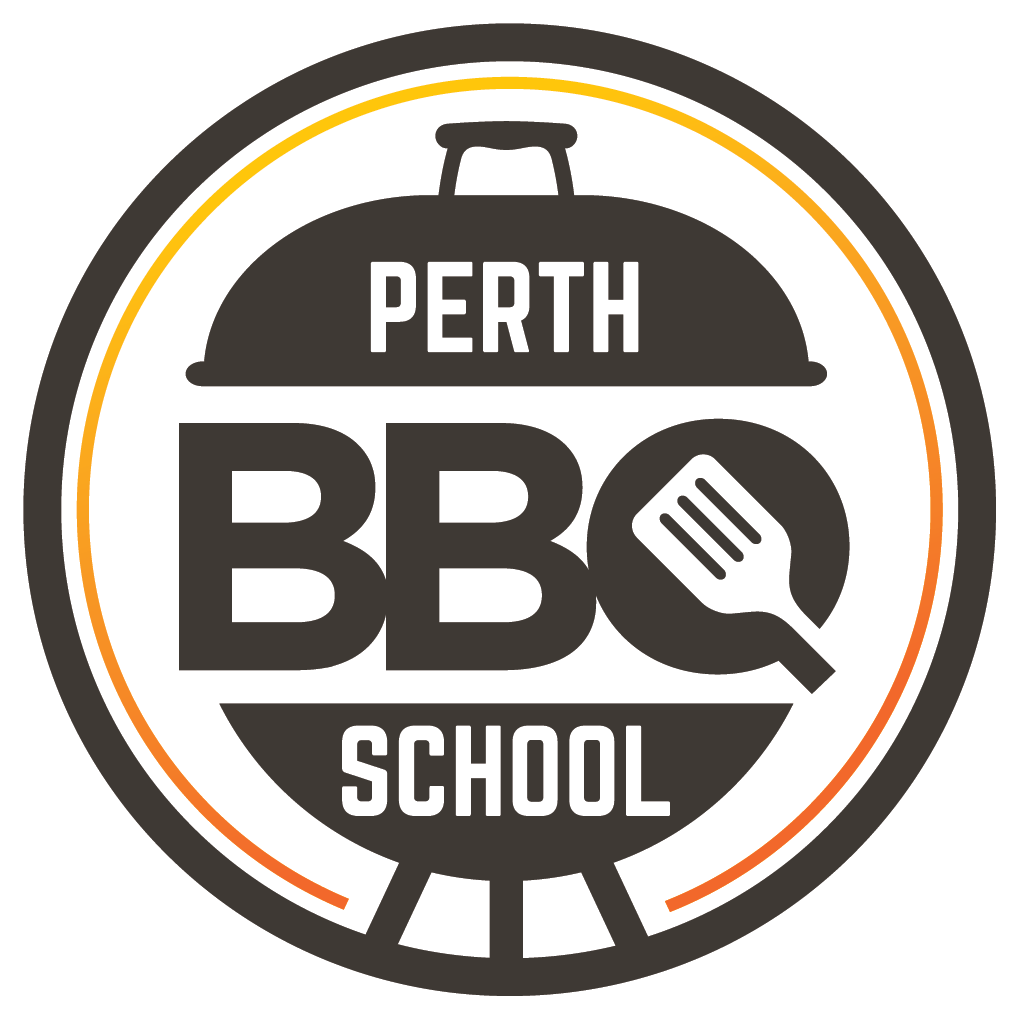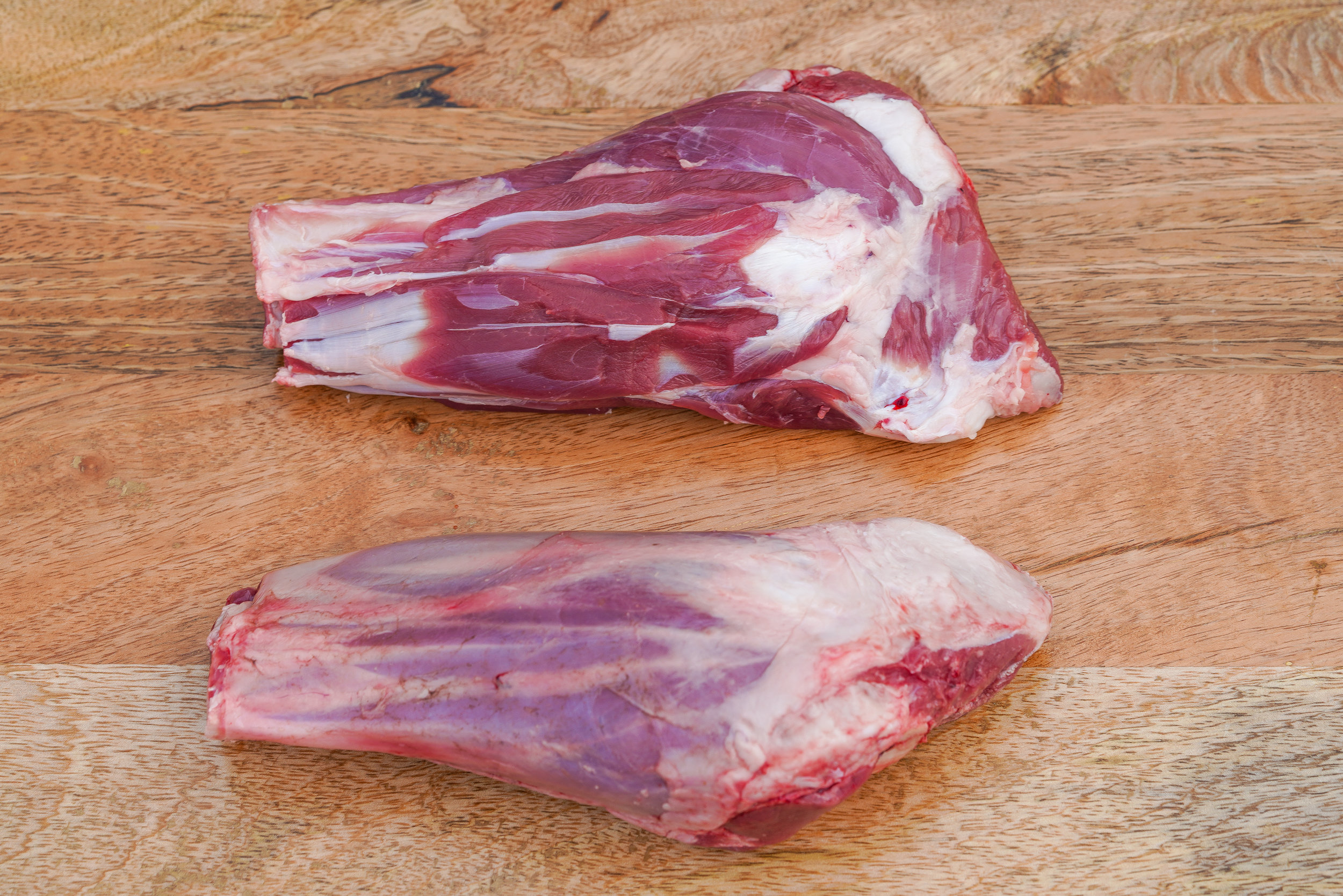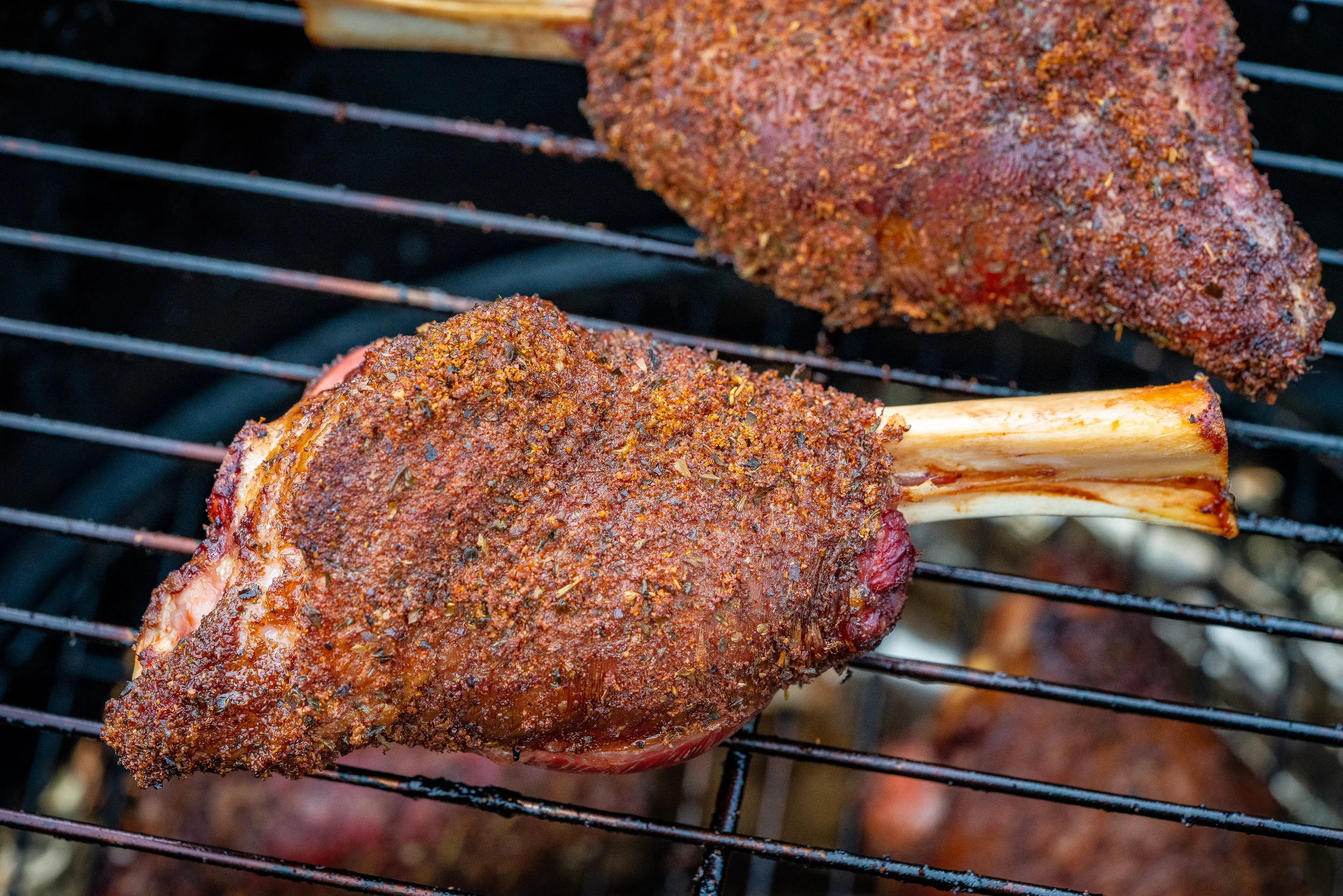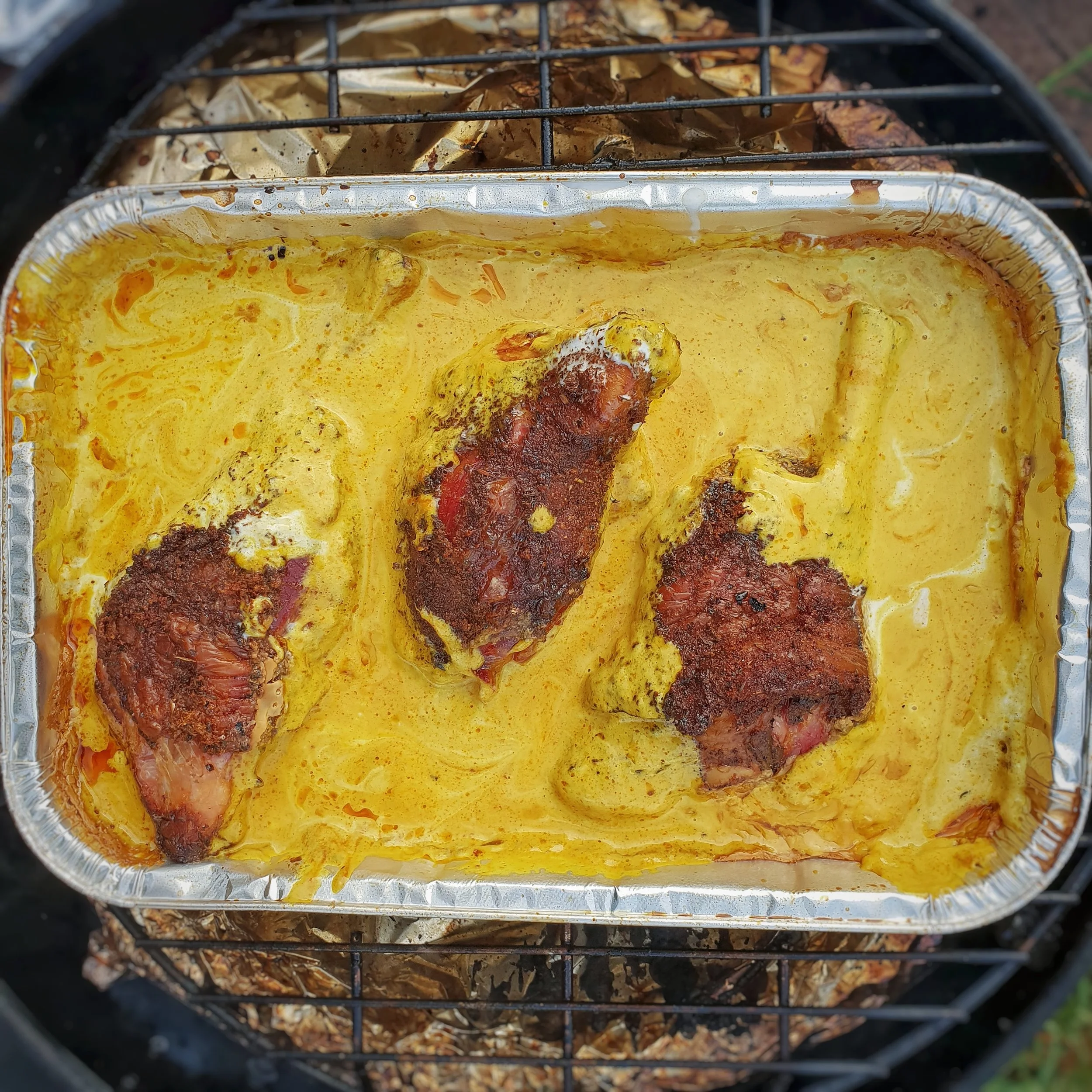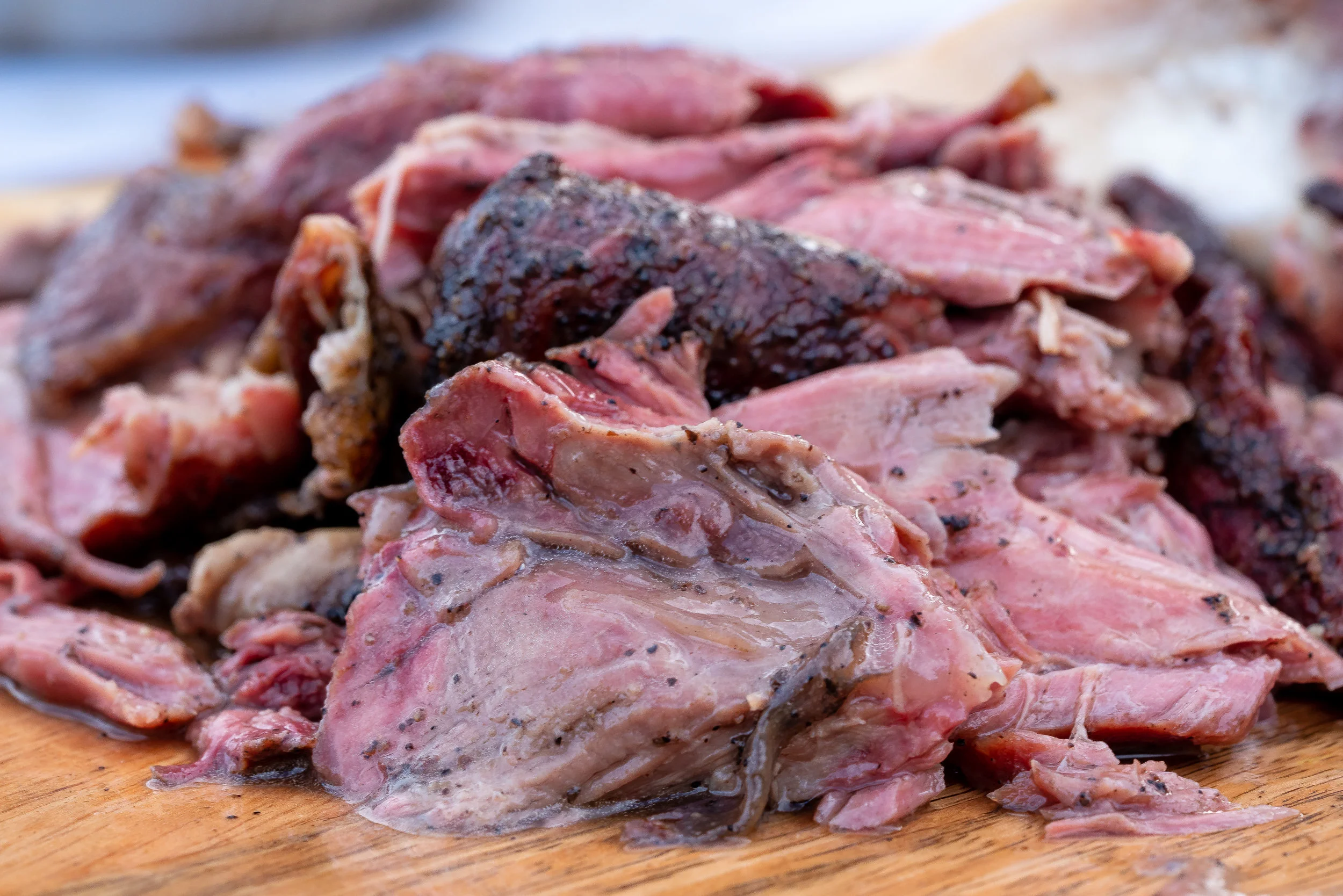Smoked & Braised Lamb Shanks
Coming in to the colder months I thought I would share one of my favourite methods for adapting a classic winter warmer to the barbecue: lamb shanks.
Getting in to barbecue everyone quickly pursues the big cuts, BBQ Pitmaster staples such as brisket or boston butt; however low and slow barbecue does not have to be constrained to the common cuts, you can adapt any secondary cut or typical braising cut to your barbecue.
Lamb shanks are full of connective tissue, collagen and fat, which is what makes them a secondary cut but also makes them so amazing when cooked to their full potential.
Above I have two forequarter shanks, trimmed and untrimmed. Using a sharp knife, take off the thicker layers of silver skin and tendons. Shanks are not huge to begin with so I try not to get too carried away as by finishing with a braise we can often break down any remnants.
Frenched lamb shanks are pretty, but ugly is delicous!
Method:
Set smoker / barbecue to 250-275f (120-135c)
Season shanks in rub of choice (see below)
Smoke to 160-175f (70-80c) internal temperature or bark is set
(2-3 hours)Place shanks in tray of preferred braising liquid (see below)
Can either leave open (boating) or cover with foil to speed upContinue cooking until internal temp approx. 208f (97c)
(1-3 hours)Rest 1 hour, then serve.
Rub:
These articles are intended to be more about method than being overly prescriptive on flavours as you might have your own crazy combos in mind.
Typically I prefer savoury flavours for lamb, another consideration is your braise recipe as the rub will end up bathing in all that goodness too.
One favourite for this method is Lane’s Garlic2 - it creates a great bark and the garlic flavours will add depth to any braising concoction without drama.
Ruckus, Tree Bark, BBQ Mafia Little Lamb are also great options. Add a little rosemary to Ruckus for the goodness.
Braise:
For the braising step you can adapt any braised lamb shank recipe you have used in the past, we have just added in a step prior with the smoke.
A typical combination for me is stock, dark beer and rosemary (baby, you got a stew going!) - I then usually take the liquid at the end of the cook and reduce it for a delicious sauce/jus that is now full of lamby goodness.
In the Beef Cheeks Guide we did boating then wrapping - for this article I’m going to leave it up to you, the reader.
Boating = better bark on top
Wrapping = faster cook
Typically I just go for that ultra braisey goodness and just pop a foil lid on that tray straight up, this should keep the final step at about 1-2 hours. Pre-heating your braise liquid also assists in expediting your cook.
Get creative with your braising liquids - there are so many things you can do!
Serving:
The shanks are done when they are probe tender. In a braise you can’t really overdo it - think about the pre-barbecue days, you would leave shanks in a pot for hours on end with no concern, but arm someone with an instant read thermometer and they lose their minds.
Typically I find finish temp to be a little on the higher side compared to some traditional barbecue cuts, landing at approximately 208f on average (but use feel as the ultimate guide)
Rest for at least one hour before serving - I like to take the shanks out, wrap them then reduce that delicious liquid into a jus.
This is why I love lamb shanks - sticky, delicious, collagen-laden goodness.
Give it a try - let me know how you go and if you come up with any great braising recipes!
